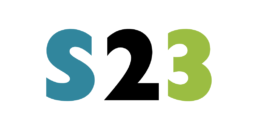Improving landslide risk prevention and management in coastal areas
Acronym: RESONANCE
Description
RESONANCE aims to decrease the risk for humans and infrastructures by improving the understanding about the factors controlling coastal landslides and erosion processes in the Adriatic region and, at the same time, the civil protection procedures/guidelines. The project will take advantage of the recent advancements on the fields of geophysics, remote sensing, computational analysis and virtual-mixed-augmented reality (VR, MR and AR), and will be developed through the following stages
Il progetto trarrà vantaggio dai recenti progressi nei campi della geofisica, del telerilevamento, dell’analisi computazionale e della realtà virtuale mista-aumentata (VR, MR e AR) e sarà sviluppato attraverso le seguenti fasi
- Select four representative pilot case studies: two in the Italian and two in the Croatian coasts to be used as pilot test sites where to develop a multidisciplinary and multitemporal survey system. The pilot areas will be selected in four regions of the Adriatic area commonly affected by landslides/erosional processes, Marche, Region, Puglia Region, Primorje-Gorski Kotar County and Istrian County.
- Perform numerical analysis of coastal behaviors to potentially predict the future processes in relation to climate variation and weathering processes and create a vulnerability and risk maps of the pilot areas.
- Create a virtual database containing the research results e define new guidelines for managing hydrogeological risk in Adriatic coastal area.
Project information
- Co-funded by: European Union
- Call: Interreg VI A Italy-Croatia Programme 2021-2027
- Start date: 1 March 2024
- End date: 31st August 2026
- ISPC Scientific coordinator: Giovanni Leucci
- Project Leader: Università degli Studi di Urbino “Carlo Bo”
- Partners: Faculty of Civil Engineering, University of Rijeka (Croatia), Parco Rgionale del Conero (Italy), Istrian University of Applied Sciences (Croatia)
- Funding: € 1.183.551,15 (ERDF 80% € 946.840,92)
- Project website →

For further information on the research topic, visit our Groups & Labs













